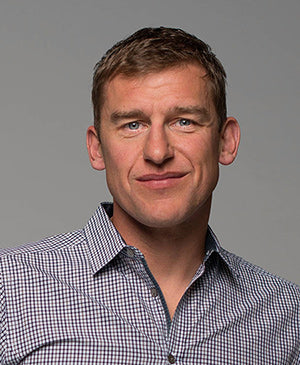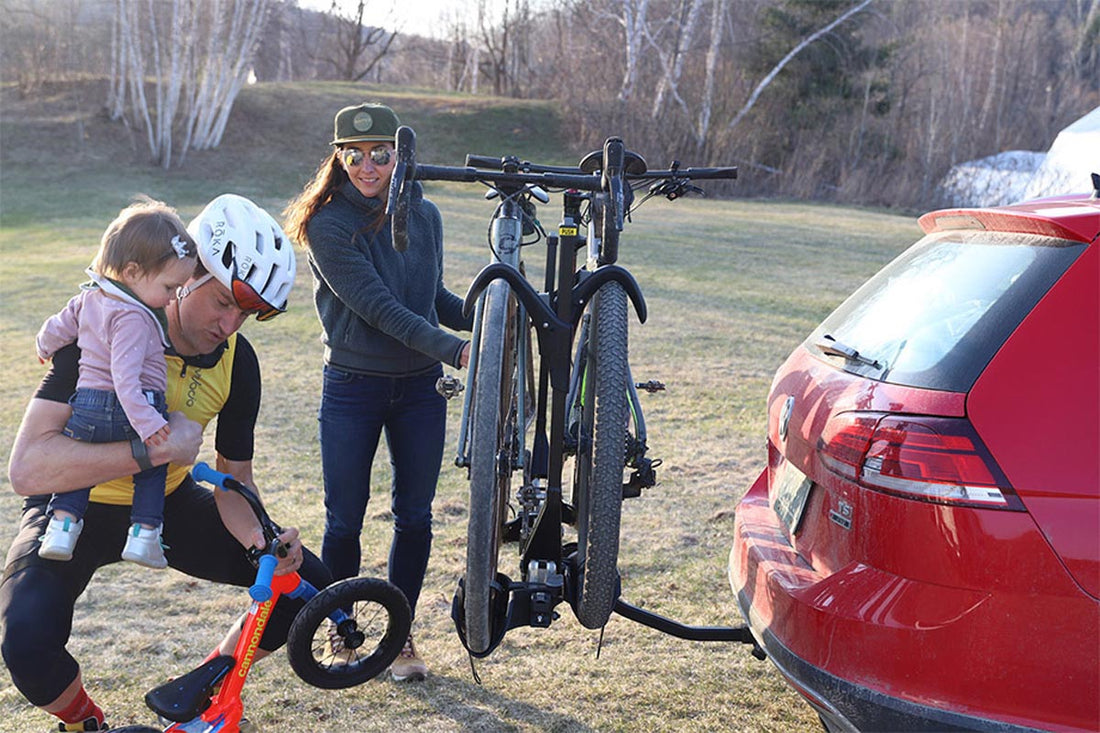The Ironman World Championships, aka: Kona, are on the lips of every triathlete and fan in the weeks leading up to the big event. No one knows this better than elite triathlete coach, Matt Dixon, of purplepatch Fitness.
Through his coaching career he's helped over 200 athletes qualify for Kona. In fact, multiple purplepatch athletes have left Hawaii as Age Group World Champions, along with many pros in the Top 10 year after year.
With a track record like that, who better to ask for advice? We asked him how an indoor bike trainer can help athletes prepare for the big event. According to Matt, there are three main ways a bicycle trainer can help you get Kona-ready:
- A time-efficient training tool to help us integrate training into a busy life.
- Develop the all-important ability to retain posture, form and good pedaling under fatigue.
- Retain a range of intensity and strength-endurance in shorter key sessions.
Matt elaborates below, and even gives our readers a few sneak peek workout snippets from his new book the Fast Track Triathlete.

By Matt Dixon, coach and founder of Purple Patch Fitness
As we head to the final block of training toward the IRONMAN World Championships in Hawaii, it is timely to outline how we tend to utilize bike trainers for the purplepatch athletes heading to Kona.
The truth is that for the vast majority of athletes the trainer remains a key tool in successful preparation, mostly born out of the reality of life situations and the demands to think outside of the box of classic training in order to arrive to the island prepared. We generally utilize a bike trainer for the three main reasons listed above, which we'll explore in more detail. 
1. For the Time-Starved Athlete
There is always a balance between getting the work done, in order to prepare for an IRONMAN in the harshest of conditions, and successfully integrating that work into the busy lives led by so many athletes.
While the majority of prescribed training for our pros will be outside, and include multiple rides over more than three hours in any given week, this simply isn't a practical reality for most age groupers. Even if I asked a busy amateur to organize life to cram in extra hours of training, the likely result would be arrival to Kona fit, yet fatigued.
Time and again I see compromised sleep and stress resulting from training hours crammed, unsustainably, into life. This is where the trainer can come in; to help facilitate the needed muscular resilience and endurance required to ride well over 180 km.
To make it truly effective, we must think outside of the box. Rather than simply thinking in terms of a single session, and trying to force long duration in a trainer ride, I often leverage the chance to easily integrate shorter sessions in the week and around the weekend, when most athletes do have a little extra time. It's this approach, making the most of the time that busy people do have, that is the foundation of my new book, which gives busy athletes actionable plans for improving their triathlon performance without sacrificing (and instead, improving) their performance for the rest of their life.
One example of how you can apply this approach is to map a double-day of short to medium duration trainer rides, prior to a weekend ride that is truly IRONMAN focus.It would look something like this:
Friday AM
60 to 90 minutes of Total Trainer Ride.
Including: 6 x 5 min of Strength-Endurance intervals under 65 rpm with 3 min spin between.
Friday PM
60 min Short Ride with IRONMAN focus.
Including 2 ROUNDS OF:
- 10 min IRONMAN Race Effort
- 5 min well above IRONMAN Race effort.
- 5 min recovery - endurance at 70 rpm
Saturday
IRONMAN RIDE OUTSIDE.
Following the double ride of Friday, I then prescribe a full endurance ride with IRONMAN specific intensity.
Another example of using the trainer in Kona prep may be on a KEY weekend session as a stand-alone addition. While a five-hour ride may be the preference, many athletes may be limited in how many weekends they are able to hit such duration and be away from the family for that long.
It is not uncommon that many IRONMAN focused athlete only have a typical single allotment of time on a weekend ride of about 3 hours. How can I adjust and evolve?
In these scenarios, I would maximize the three-hour morning block of work with intervals at and above IRONMAN effort.Something like:
Key Weekend AM Session
3-4 ROUNDS OF:
- 15 min IRONMAN
- 10 min IRONMAN 70.3
- 5 min OLYMPIC Distance.
- 5-10 min easy recovery between.
With the shorter duration of available time, I adjust and hit overall load with a shift up in intensity. The ideal scenario is that this session is completed outside, to help with terrain management and real world riding, but now comes the role of the trainer.
In the afternoon or evening, I would add a shorter session with a single aim, which is to hit IRONMAN intensity with great form, posture and pedaling, a key feature of Kona success.It may look like:
Key Weekend PM Session
WARM UP 10 min ramp.
MAIN:
- 15 to 30 minutes at IRONMAN effort in TT position.Last 2 minutes of each 10 minutes at LOW RPM.
- 5 minutes finish at or above IRONMAN effort
(Interested in more extensive workout plans that follow this structure? Check out the Fast Track Triathlete.)

2. For Posture and Form
A second use of the trainer related to a key feature of success in any IRONMAN, but one that is particularly prevalent on the Hawaii IRONMAN course. In the later stages of the bike, as emotional and physical fatigue begins to creep in, it is common for athletes to transition to riding with poor form, pedaling and terrain management.
You could stand at the side of an IRONMAN course, and might believe that many athletes had stopped at the turn for an extremely bad bike fit, as the fatigue creep shifts how they sit on the bike. Mental focus wanes and the commitment to truly riding the bike well declines.
The first step in preventing this power and speed-sucking decline is awareness. The second step, and one that's just as important, is trained preparation. We must integrate the habit of always sitting on the bike well, and focusing on pedaling in time trial position without unnecessary movement or twitching.
In order to execute this in Kona prep I often prescribe a trainer session that only focuses on this. Following a warm up and pre-main set, I ask the athlete to mentally prepare as though they are several hours into the event itself. I ask them to place themselves on the Queen K highway, with 35 miles or so to go, along the long and lonely stretch of wind-blown highway.
While we many integrate some mix of cadence (RPM) to simulate the head winds and tail winds that often accompany this piece of road, the key piece of the puzzle is to sustained IRONMAN specific wattage, in Time Trial position, for an extended time (30-45 minutes).
The goal is to seldom shift position, never come out of time trial position, and to practice hydration and fueling from this aero position, in the same rhythm, timing and amounts as the athlete expects for race day.
Part mindset, part physical and postural conditioning, for me this is the most important part of the Kona bike course, and he or she who can focus, ride well, and manage terrain in this section is setting themselves up for a good day.
3. To Maintain the Intensity
The final piece of the puzzle for bicycle trainers is to retain the chance to hit some higher intensity and end of range training in the middle of the week. While we aim to build resilience and IRONMAN specific training intensity, we want to ensure that we hold onto the ability to produce power and effort well above race pace. We must use it or lose it, and with the majority of the amateur athletes outside rides rightly focusing on dialing in race intensity, the indoor bike trainer is a wonderful venue to hit some higher intensity.
By using the trainer, I am also able to objectively track the output and cost of this higher intensity training. If I notice a sharp decline to produce higher wattage numbers that seemed to come easily for the athlete earlier in the season, it is likely a red flag they are accumulating too much fatigue.
While you don't need to be primed for your bike sprint or Olympic distance performance, you do want to be able to produce the full range of intensity. Using the bike trainer as a tool to hit the top end, but compare objectively to outputs in earlier parts of training is not only valuable in-week training, but a great barometer of freshness and fitness.
Remember your goal is to avoid arriving fit and fatigued at race day - we want you fit and fresh! Think creatively about how you can utilize the tools at your disposal to fit triathlon training into your busy life, and if you need ideas, just check out the Purple Patch Fitness website for more educational materials (like course guides, free fitness and health tips) or explore joining the Purple Patch team.
I hope that helps as a little insider into a few ways to utilizing the trainer on the path to KONA!

Matt Dixon is a world-class triathlon coach, former professional triathlete and elite swimmer, and an exercise physiologist. His Purple Patch coaching community is based in San Francisco, but his athletes span the globe.
Matt is the author of the Well-Built Triathlete, a regular contributor to sports magazines and publications, an Ironman U® master coach, and a corporate speaker.
His Master's degree in clinical and exercise physiology, as well as his experience as an elite swimmer and professional triathlete, form the backbone of his coaching philosophy, but it is his incredible ability to lead, educate and develop all levels of athletes to their potential with his excellent communication style that makes him such a sought after resource. You can follow him on the purplepatch blog, Facebook or Twitter @purplepatch.
